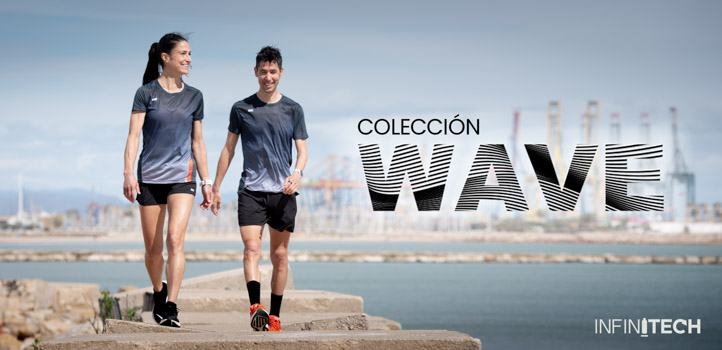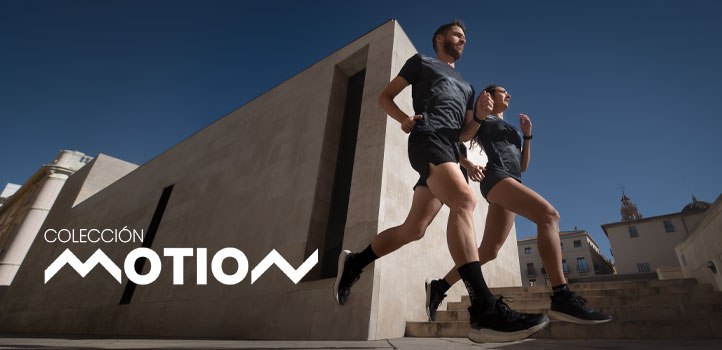Subscribe to our newsletter to find out about all the news and promotions, and automatically receive a welcome discount coupon in your email.

Technically, a cramp is an involuntary muscle spasm (usually a contraction). Unlike contractures, the cramp is occasional, not permanent.
It is usually not serious at all, although it can be very painful. The calves and the back of the thigh are the areas most susceptible to cramping.
Symptoms.
Very intense and localized pain in a specific muscle.
Muscle tension is usually noticeable to the touch ("hard as a rock"), and in many cases it is impossible to move the muscle until the cramp subsides.
What causes them.
It usually occurs when any of these conditions occur, usually more than one at a time:
- Overexertion of the muscle.
- Very intense and prolonged exercise. The cramp occurs when the muscle begins to fill with toxins and waste, and begins to burn oxygen with difficulty.
- Loss of mineral salts (main cause of cramps that occur after training for a long time).
In certain cases, if there are circulatory problems or muscle irrigation, either due to injury, from maintaining a posture for a long time that cuts off circulation at some point, or other physiological causes.
What to do when it happens: First aid.
- Interrupt the activity. Normally, the cramp itself forces you to stop.
- Massage the muscle, as indicated this picture. There is usually some relief when squeezing hard.
- Try to stretch the muscle, helping yourself with your hands if necessary (moving the closest joint). Relax it for a moment, and keep trying to stretch.
- When the cramp subsides, move gently, so that the muscle works. If we freeze, it can be repeated.
- Refreshing with cold water usually helps.
Prevention: How to prevent it from happening to us.
Sometimes they are difficult to avoid, especially those that occur after a period of training, due to the accumulation of toxins. In general, a correct heating serves so that they do not occur. It is also advisable to be careful with the postures. Some cramps in the calves occur after being in a kneeling position for a while, and also when the person is not used to sitting on the heels.
Cramps (Xotk's contribution)
Extracellular magnesium It is involved in nerve and muscle transmission, in the proper functioning of the cardiac muscle (heart), and plays an essential role in muscle relaxation. Intracellular magnesium "It is part of the bone matrix."
For nerve transmission and the heart, magnesium works both intracellularly and extracellularly.
In relation to the bone matrix, magnesium is purely extracellular, since the bone matrix is just everything that is left outside the cells in the bone ... that is, just the opposite of what is written above ...
I understand that the ionic it is a question of intracellular and extracellular balances. The amount of functions in which ions are involved that we might think are only in muscle contraction and fatigue would leave us amazed…. calcium, magnesium, manganese, copper, iron…. They are involved in nerve transmission, DNA replication, protein production, maintenance of the extracellular matrix of any tissue and body fluid (not only bone), membrane fusion for different purposes (exocytosis, endocytosis, various secretions ... .) In short, to blame magnesium seems to me to reduce the question a lot.
Cramps can appear in each individual for different reasons, and in the same individual at different times for different causes, from excess heat to central fatigue ...
It is a multifactorial issue almost casual and general functioning. I explain. It is possible that no matter how well you hydrate and take care oflimentation, it turns out that on the day of the marathon it is 20 degrees and the heat ruins all your care due to premature dehydration. Or that you have an ideal day of 12 degrees for running but that going to the bathroom with some diarrhea due to nerves on race day leaves you out of your game.
Central fatigue is developed due to lack of supply to the system, it would be more related to training in the strict sense. Know how to combine resistance and power so that the heart is strong at all times and the pájara does not come.
It is as difficult to answer your question as knowing why in Athens Paula Radcliffe or Tergat did not have their day being the best ... Or for example, how could Julio Rey do the great Fukuoka race the other day if the temperature and rain conditions etc. They were lousy ??
There are people who take a banana in the half marathon and arrive fantastic, there are others that a banana makes them abandon or at least vomit at km 30…. There are no universal remedies for the question you are asking.
There are days when one is not there at all, and others when the kilometers are not noticed…. And that happens to you in any training if you need to do a marathon. If you are able to understand how you function in different situations, you will be able to delay the appearance of these cramps or any other issue. This is done based on training and time…. there is no other secret.
Best advice It would be to do a training that combines resistance and power well (you can look at the thousands of plans that there are), that you are able to adapt it to you so that you assimilate it well and be able to delay the appearance of everything related to fatigue, such as cramps, vomiting, dizziness, arrhythmias ...
42K Best sellers in the last 15 days.
42K · All rights reserved


Comments
Post a first comment for this entry!